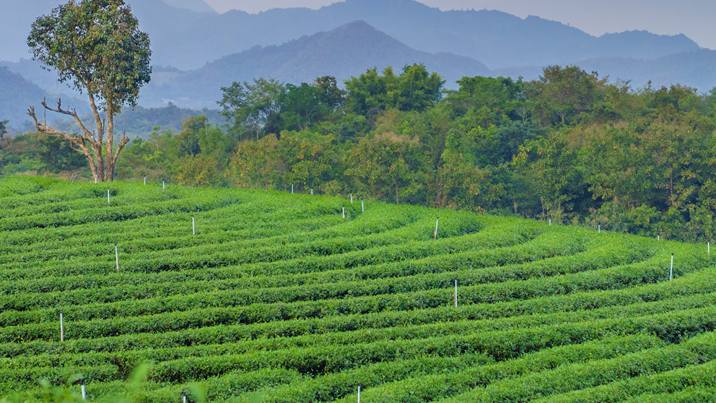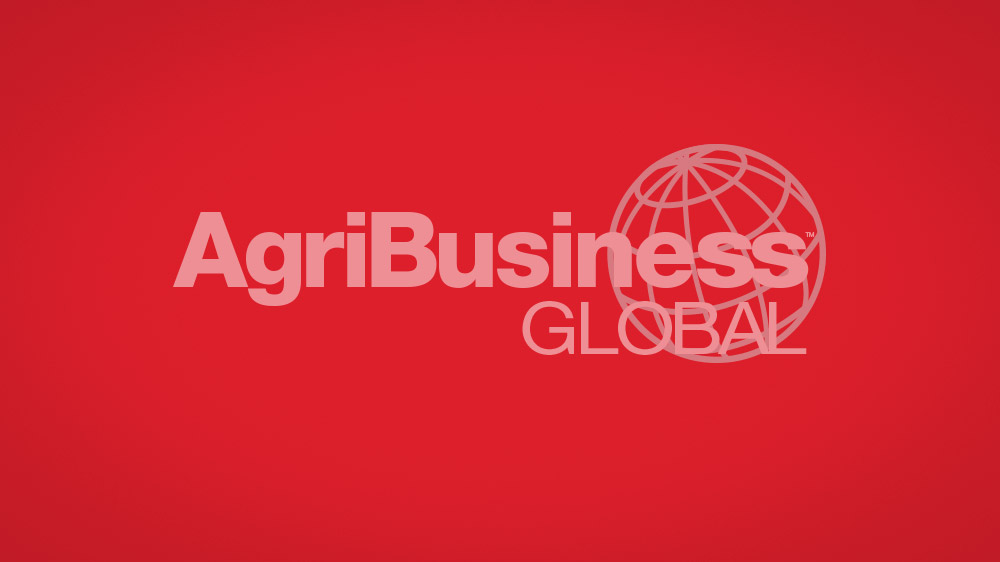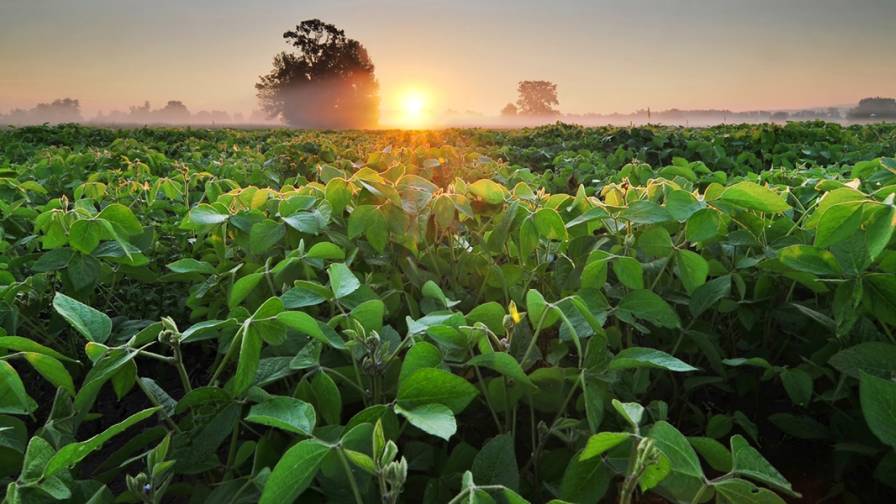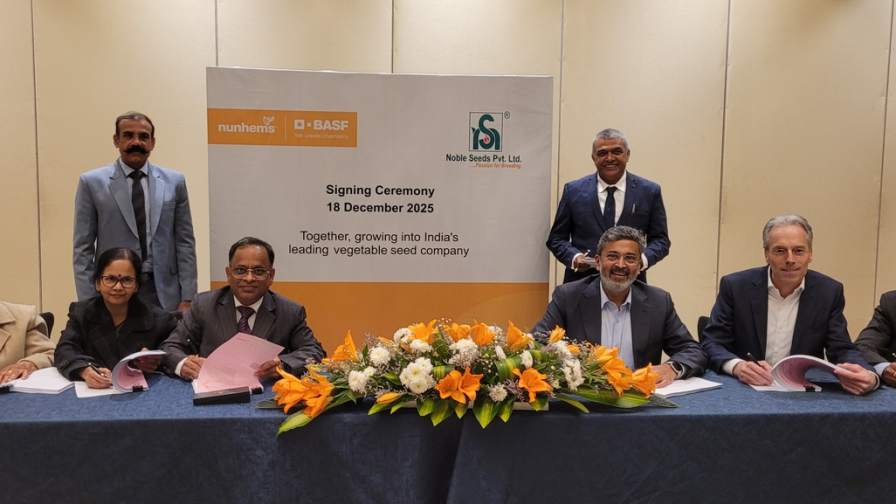Untreated Seed…Superseded
Seed treatments are outhustling all other crop protection sectors, and at a glance, it’s easy to see why. Seeds are a vulnerable, increasingly costly link in the input chain. If you can treat just the seed, you potentially limit the entire area you need to spray.
Overwhelmingly, high crop prices and governments are driving seed treatment adoption – particularly in India and Latin America, all the while acceptance and investment in genetically modified crops grows and input costs keep rising. The risks of using treated seeds as a crop protection alternative to foliar treatment are low, both economically and environmentally, not to mention exposure levels to the applicator. Employing technology of ever greater sophistication, seed treatments are known to raise stress tolerance, while improving germination and vigor of the plant.
“There’s a very visual difference both in plant size, health and root structure with the use of biological amendments over what we’re seeing in untreated soybeans,” says Warren Richardson, senior marketing manager, North American seed treatment at DuPont Pioneer. “From the grower’s prospective, it’s about identifying the consistent, early emergence, improved root structure and mass. The other side of it is, customers want to get into the field earlier and earlier, and seed treatments protect the plant under those more stressful conditions,” he said in an interview with Farm Chemicals International.
Even modest increases in yield are giving growers reason to experiment with new products with crop prices at current levels, says Dr. Robert Fanning, plant pathology field specialist at the South Dakota State University Extension. There are not often large returns, he says, except in cases where seed treatments can thwart the yield loss and market rejection caused by common bunt infestations, for instance.
Writes Duncan Allison, Senior Associate at Kline’s Specialty Pesticides Practice: “While seed can be treated on the farm by the farmer, it’s not easy to get good distribution on the seed. Farmers in developed and developing countries alike are recognizing the value of getting new seed each year, and seed companies supplying that seed are realizing the value of treating their supplies.”
More recently developed products protect seedlings during the critical first three to four weeks of plant growth. And certainly, seed treatements such as Bayer’s imidacloprid and Syngenta’s thiamethoxam have already largely replaced older insecticides.
Nematicides Pick Up Steam
As soybeans have not been treated historically, it has incentivized a flood of new products in the wake of record-high bean prices. The shift in acreage away from cotton, too, means growers find themselves battling nematode damage in corn and soybeans. Accordingly, seed treatment nematicides like Bayer CropScience’s Poncho/Votivo and Syngenta’s Avicta are gaining prominence. Fanning says he sees burgeoning interest in products that provide protection against root and crown rot, and seed treatments that afford a longer period of effectiveness than 14 to 21 days.
Dr. Donald E. Hershman, University of Kentucky Extension plant pathologist, has clear reservations about the benefits of treated soybean seeds in the United States – unless a disease like Phytophthora root/stem rot is involved – because he says he has yet to find yield differences that can be measured reliably, although he almost always sees a one- to two-bushel yield variance between treated and non-treated beans.
“It is a mixed bag, mainly because in most situations getting good stands is not a problem. Plants can compensate for some stand loss and benefit when it does occur is almost always not very dramatic or visibly evident (at least compared to foliar treatment),” Hershman told FCI.
“Right now, growers are giving seed treatment products and companies a lot of grace when it comes to seed treatment nematicides,” he contends. “Companies surely know that seed treatments may help, but will never replace resistant soybean cultivars and crop rotation for managing soybean cyst nematode,” the devastating pest that costs farmers in the United States, South America and Asia hundreds of millions of dollars per year.
Asia-Pacific Eating at America’s Lead
Multinationals are clamoring for their piece of the global seed treatment and biological market. A trickle of M&A activity culminated most recently in Germany’s BASF’s $1.02 billion takeover of seed treatment heavyweight Becker Underwood in September. The Ames, Iowa-based company is expected to rake in $240 million in fiscal 2012. BASF will add Becker’s long product lineup encompassing biologicals and seed coatings, such as polymers that adhere chemical actives to seed and reduce dust-off, increase seed flow, boost application coverage and provide build-up of seed when needed, and legume inoculants that introduce beneficial bacteria to the seed or soil at planting, improving the plant’s ability to use nitrogen from the atmosphere.
A day earlier, Syngenta picked up Florida-based Pasteuria Bioscience for $86 million, announcing that the first product under the merger would be a seed treatment for soybean cyst nematode to be launched in the United States in 2014.
The United States remains the top seed treatment market, claiming more than 38% of global market share, according to Kline Group. But China and Brazil in particular have eaten away at this lead over the last five years. Brazil now accounts for nearly 21% market share. Bayer CropScience has said it will double its seed treatment revenue in the country by 2016.
Another study estimates the global seed treatment market will reach $3.43 billion by 2016, implying a constant annual growth rate of 13.5% from 2011 to 2016, according to U.S. consulting firm MarketsandMarkets. The North American market is expected to hold 22% of the global share by 2016, at an estimated compound annual growth rate (CAGR) of 16.4% due to higher acceptance of GM seeds for soybean and corn. Asia-Pacific is expected to grow at 14.4% a year.
Corn captured well over one-third of 2011 seed treatment sales, followed by wheat at just under one-fourth, Kline says of the 10 leading crops it analyzed in a recently published report, Seed Treatment Global Series: Market Analysis and Opportunities.
â– Insecticides. The chemical insecticide market made up more than 52% of total seed treatment demand in 2010, according to a 2012 Markets and Markets report. It is projected to reach $1.59 billion by 2016, setting a CAGR of 11.4%
â– Fungicides. The global fungicide market is expected to hit $1.25 billion by 2016, setting a CAGR of 15.2%.
â– Biologicals. One of the fastest growing seed treatment segments, biologicals include products like Bayer’s Votivo, which creates a living barrier around plant roots so nematodes have limited access to feed.
â– Other. Be they electric blue pearls, golden nuggets, or kernels of emerald green or cotton candy pink, colored seeds can tell your company’s story. Becker Underwood customizes pigments for seeds “in almost any color you want. We can produce colorant for your company’s corporate identity, new products, or even special event,” its website states.
Big Advances in Africa
A two-year agricultural research and trial program in Malawi funded by former U.S. President Bill Clinton’s foundation found that soybean and maize seed treatment trials saw 30% yield increases on average.
FBSciences Inc., a U.S. plant health technology firm, announced the findings of a two-year agricultural research and trial program in Malawi as part of the Clinton Foundation and Salida Capital’s Foundation Partnership for Sustainable Development in Africa. Over the two-year average, the soybean seed treatment trials saw a 30% average yield increase ($418 per hectare), the maize seed treatment a 30% average yield increase ($189 per hectare), and the maize fertilizer enhancement trials yielded an average increase of 37% ($187 per hectare).
The results were significant in their implications for Malawi, one of the 20 poorest nations where 40% of the population lives on less than $350/year. For local farmers and their families, these yields translate to double the average annual income of the Malawi farmer.
“The Clinton Development Initiative [CDI] has been working in close partnership with the government and people of Malawi to help lift farmers’ incomes in ways that can be locally sustained. Providing farmers with effective, fairly priced, and safe farm inputs is an important part of our work,” President Clinton said. In 2010, Salida Capital partnered with CDI to increase the scope and impact of sustainable agriculture projects, including the CDI-run Mpherero Farm in Malawi.
As large numbers of smallholder farm families increase their incomes, they have the ability to improve their livelihoods as well as the lives of their families. Nearly 90% of Malawi’s population is engaged in farming, and one-third of its GDP is fueled by agriculture. Investment in agribusiness will help move communities out of poverty.
In addition to working with Malawi’s government to approve the products used in the trials for full-scale commercial use, FBSciences also has current yearlong trials with Bunda Agricultural College and African seed producer and distributor Seed Co., the results of which are forthcoming.






